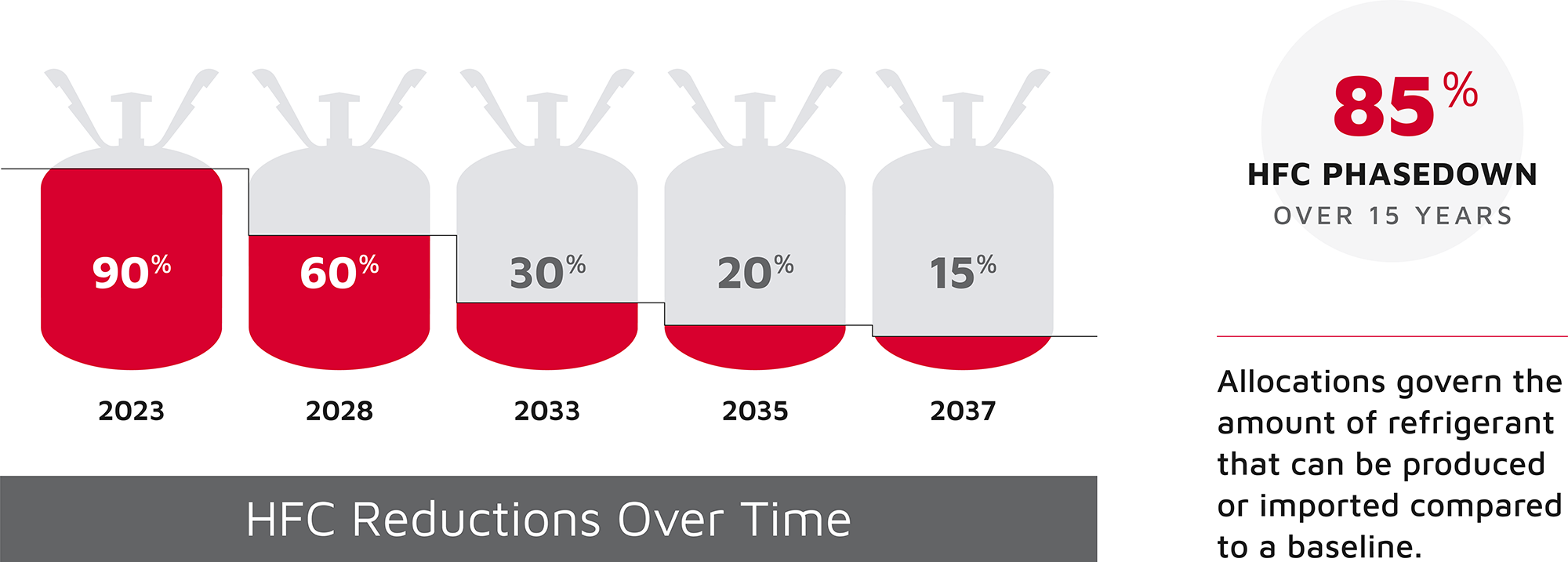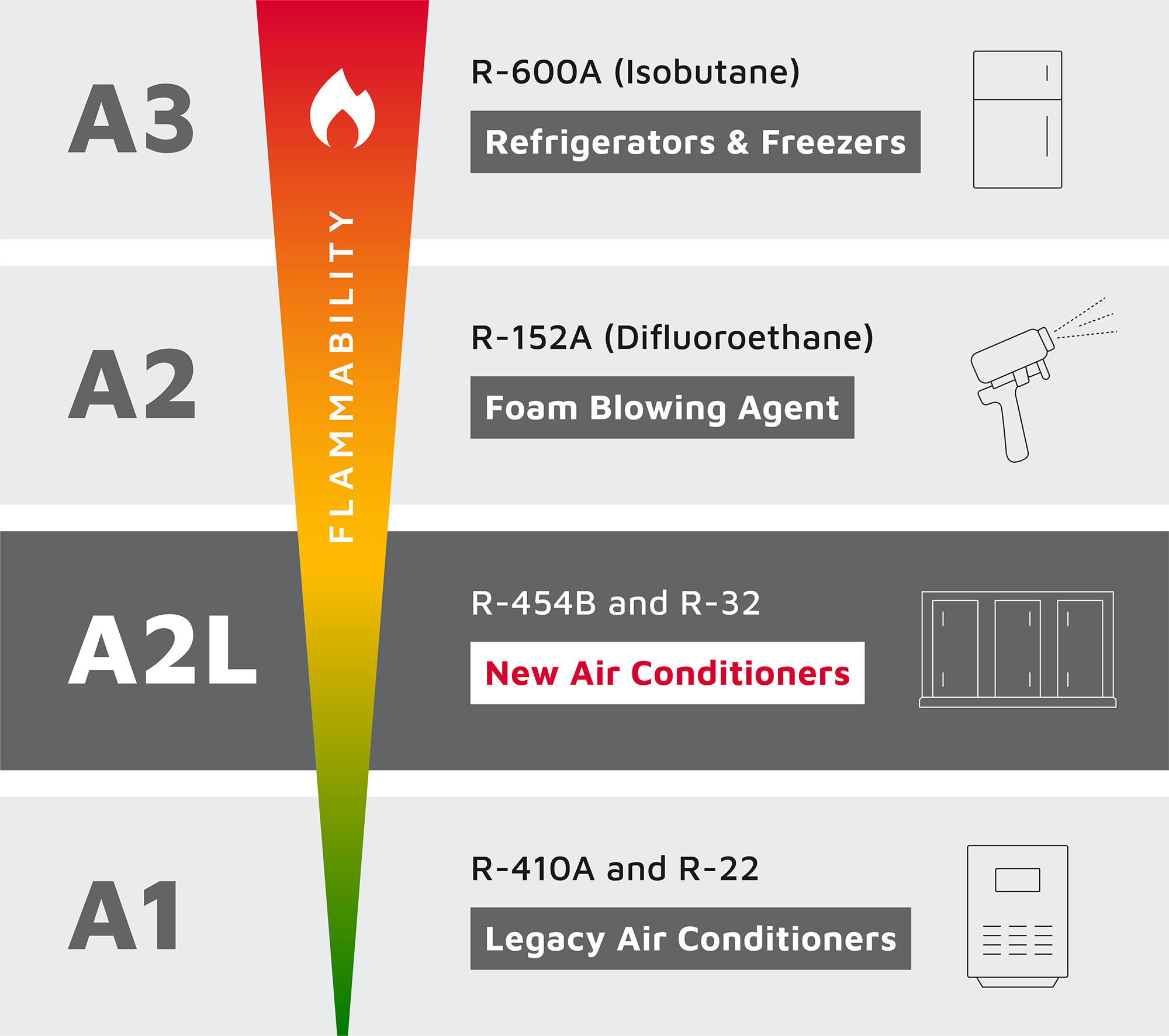In 2025, the HVAC industry in the United States will undergo a significant regulatory shift with the implementation of new environmental standards for refrigerants. This article provides a detailed overview of the upcoming changes, the implications for light commercial HVAC equipment, and how Lennox Commercial is poised to assist in this transition.
Understanding the Regulatory Change
The American Innovation and Manufacturing Act (AIM) of 2020, alongside the Environmental Protection Agency's (EPA) Technology Transition rule, mandates a transition away from high Global Warming Potential (GWP) refrigerants utilizing HFCs like R-410A. The industry is moving to A2L refrigerants like R-454B and R-32 to comply with the EPA’s transition rule. Starting January 1, 2025, OEMs can no longer manufacture packaged rooftop units utilizing refrigerants with a GWP exceeding 700 in the United States. The Variable Refrigerant Flow (VRF) systems will undergo the mandated transition to Low GWP refrigerant on January 1, 2026.
The Environmental Impact of HFCs
Hydrofluorocarbons (HFCs) used in various applications including air conditioning and refrigeration, are potent greenhouse gases. Although they do not damage the ozone layer, their high GWP means that they contribute significantly to the greenhouse effect. The EPA's phase-down of HFCs is expected to reduce emissions by 4.6 billion metric tons of CO2 equivalent between 2022 and 2050—a reduction comparable to removing over 25 million railcars worth of coal from the energy mix.

The production and import of higher GWP refrigerants will be phased down over time which means legacy hydrofluorocarbon (HFC) refrigerants, like R-410A, will become less widely available and more expensive.
(Courtesy of Lennox Commercial)
Defining Low GWP and A2L Refrigerants
GWP stands for Global Warming Potential, a metric developed by the United States Environmental Protection Agency (EPA) to measure the amount of heat trapped in the atmosphere from greenhouse gases. While there is no strict legal definition for the term “Low GWP” refrigerant, it generally refers to refrigerants with a GWP of 700 or less, per the EPA Technology Transition Rule. R-454B, the Low GWP refrigerant selected by Lennox, has 78% lower global warming potential than the previous version, R-410A. R-454B is also classified as an A2L refrigerant which refers to an ASHRAE standard denoting low toxicity (“A”) and low flammability (“2L”). Both R-454B and R-32 fall under the category of A2L refrigerants. These ASHRAE standards play a crucial role in the development of codes and in shaping guidelines for safe handling.

A2L refrigerants are mildly flammable with a lower risk of ignition and spread. (Courtesy of Lennox Commercial)
Safety and Handling of New Refrigerants
A2L refrigerants present different safety considerations compared to A1 refrigerants like R-410A and require specific handling and safety protocols. Storage cylinders for A2L refrigerants will be light green-gray with red tops and feature left-handed threads, differing from the right-handed threads used for A1 refrigerants. Additionally, these cylinders will have pressure relief valves designed to manage overpressure without releasing excessive amounts of refrigerant.
Federal Sell-Through Standards
There will be a 3-year sell through for R-410A Residential and Light Commercial Packaged Rooftop units which are classified as “Products”. There will be 1-year sell through for R-410A ducted residential or commercial split “Systems” which are assembled and charged in the field by connecting multiple components. “Components”, defined as an individual indoor or outdoor unit used to repair an existing system, have an indefinite sell through when sold individually. Repair components may not be combined to create a new system.

To help ease the transition, equipment produced before January 1, 2025 can be still installed for a limited time. (Courtesy of Lennox Commercial)
Preparing for the Change
As the HVAC industry approaches the 2025 deadline, it is essential to consider how these regulatory changes will affect project timelines, budgets, and equipment performance. Lennox Commercial is dedicated to supporting your business through this transition, ensuring compliance, and maintaining operational efficiency.
The shift to lower-GWP refrigerants represents a critical step towards reducing the environmental impact of HVAC systems. Lennox Commercial is prepared to guide you through this transition, offering updated products, robust safety measures, and extensive training. By planning ahead and leveraging our expertise, you can ensure a smooth and compliant transition to meet the 2025 regulatory requirements.
To learn more about Lennox and the refrigerant transition, connect with someone at Connect | Corporate Headquarters | Lennox Commercial.



